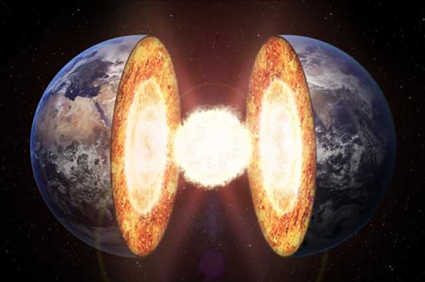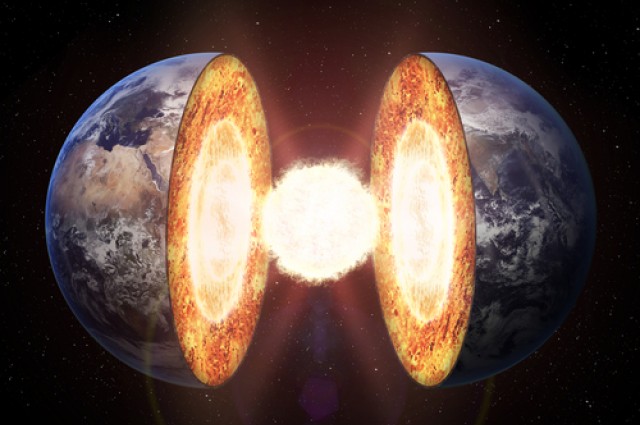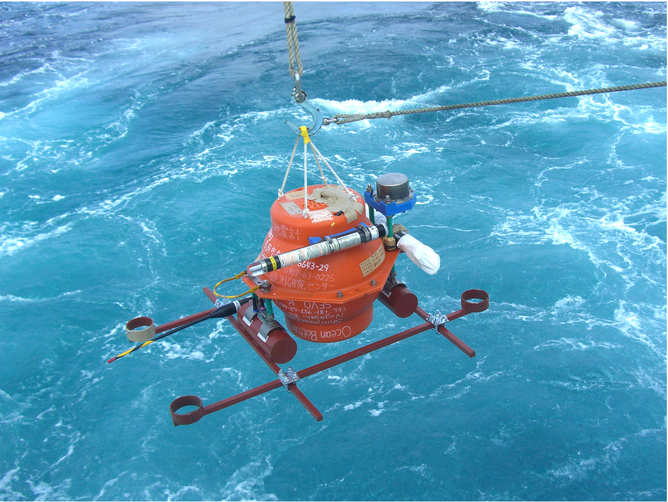Right Now
The inner core of our planet is notoriously difficult to investigate, being that it is over 6,300 kilometers (roughly 4,000 miles) away from us. The deepest humanity has ever drilled into the planet is a frankly minuscule 12 kilometers (7.5 miles). Seismologists long ago worked out that the physical properties of the core could be determined using the sound waves produced during earthquakes, but its age is less certain, with estimates ranging from 2 billion to a mere 0.5 billion years old. Today, a team of researchers led by the University of Liverpool has narrowed this down, revealing that the age of the inner core is somewhere between 1 and 1.5 billion years old. The study is published in Nature.
The inner core is our planet's deepest layer. By assessing the types of sound waves that do or do not travel through the core, scientists have worked out that it must be composed of iron and nickel. Not only that, but seismologists are confident that this sphere is slightly larger than Pluto, with a diameter of 2,440 kilometers (1,500 miles).
The interaction of the static inner core with the swirling outer core generates the Earth’s magnetic field, which protects life from dangerous levels of solar radiation. Knowing when the inner core formed – in an event known as the “iron catastrophe” – could enlighten scientists as to when this stable, protective magnetic field began to be generated. If indeed the inner core formed around 1 to 1.5 billion years ago as the authors suggest, then this would coincide with the rise of simple multicellular life on Earth, such as red algae, approximately 900 million years ago.
The magnetic field of the Earth changes frequently through time, and this record is preserved in specific igneous (volcanic) rocks as they cool down. This ancient magnetism – referred to by scientists as palaeomagnetism – was recorded in the immense oceanic crust as soon as it emerged and cooled from its respective tectonic plate boundaries. Scientists in the early 20th century used this magnetic record to prove that the planet’s continents used to be joined together over 200 million years ago before breaking apart.
The authors of today’s study used the same science of palaeomagnetism to date the inner core. By painstakingly analyzing ancient igneous rocks, they discovered that the Earth experienced a sharp increase in the strength of its magnetic field between 1 and 1.5 billion years ago. They suggest that this occurred when the inner core began to “freeze out” and differentiate from the molten, turbulent outer core.
The inner core’s formation meant that it took many of the heavier, denser elements with it, removing them from the outer core. Consequently, the outer core was left with the less-dense elements, and the molten material began to rise and fall more efficiently than before. This boosted the Earth’s capacity to generate a magnetic field, leading to the spike detected by the research team.
The team note that this is in sharp contrast to Mars, which once had a strong magnetic field. Today, Mars is unprotected against powerful solar radiation, its own magnetic field dying out after half a billion years. The debate as to why exactly this happened is still ongoing.
The inner core is our planet's deepest layer. By assessing the types of sound waves that do or do not travel through the core, scientists have worked out that it must be composed of iron and nickel. Not only that, but seismologists are confident that this sphere is slightly larger than Pluto, with a diameter of 2,440 kilometers (1,500 miles).
The interaction of the static inner core with the swirling outer core generates the Earth’s magnetic field, which protects life from dangerous levels of solar radiation. Knowing when the inner core formed – in an event known as the “iron catastrophe” – could enlighten scientists as to when this stable, protective magnetic field began to be generated. If indeed the inner core formed around 1 to 1.5 billion years ago as the authors suggest, then this would coincide with the rise of simple multicellular life on Earth, such as red algae, approximately 900 million years ago.
The magnetic field of the Earth changes frequently through time, and this record is preserved in specific igneous (volcanic) rocks as they cool down. This ancient magnetism – referred to by scientists as palaeomagnetism – was recorded in the immense oceanic crust as soon as it emerged and cooled from its respective tectonic plate boundaries. Scientists in the early 20th century used this magnetic record to prove that the planet’s continents used to be joined together over 200 million years ago before breaking apart.
The authors of today’s study used the same science of palaeomagnetism to date the inner core. By painstakingly analyzing ancient igneous rocks, they discovered that the Earth experienced a sharp increase in the strength of its magnetic field between 1 and 1.5 billion years ago. They suggest that this occurred when the inner core began to “freeze out” and differentiate from the molten, turbulent outer core.
The inner core’s formation meant that it took many of the heavier, denser elements with it, removing them from the outer core. Consequently, the outer core was left with the less-dense elements, and the molten material began to rise and fall more efficiently than before. This boosted the Earth’s capacity to generate a magnetic field, leading to the spike detected by the research team.
The team note that this is in sharp contrast to Mars, which once had a strong magnetic field. Today, Mars is unprotected against powerful solar radiation, its own magnetic field dying out after half a billion years. The debate as to why exactly this happened is still ongoing.
-
 Scientists Reveal Birth Date Of Earth's Inner Core
Scientists Reveal Birth Date Of Earth's Inner Core
The inner core of our planet is notoriously difficult to investigate, being that it is over 6,300 kilometers (roughly 4,000 miles) away from us. The deepest humanity has ever drilled into the planet is a frankly minuscule 12 kilometers (7.5 miles). Seismologists long ago worked out that the physical properties of the core could be determined using the sound waves produced during earthquakes, but its age is less certain, with estimates ranging from 2 billion to a mere 0.5 billion years old.
Sign In to leave a comment
More Posts

PwrCor s PWCO Chief Execu...
13 Apr 2020

Why some of us our shy and ...
5 Jun 2019

Scientists reveal secrets o...
5 Jun 2019

Robert Downey Jrh
5 Jun 2019

Report This Post
Please complete the following requested information to flag this post and report abuse, or offensive content. Your report will be reviewed within 24 hours. We will take appropriate action as described in Findit terms of use.
Thank you. Your abuse report was sent.

















